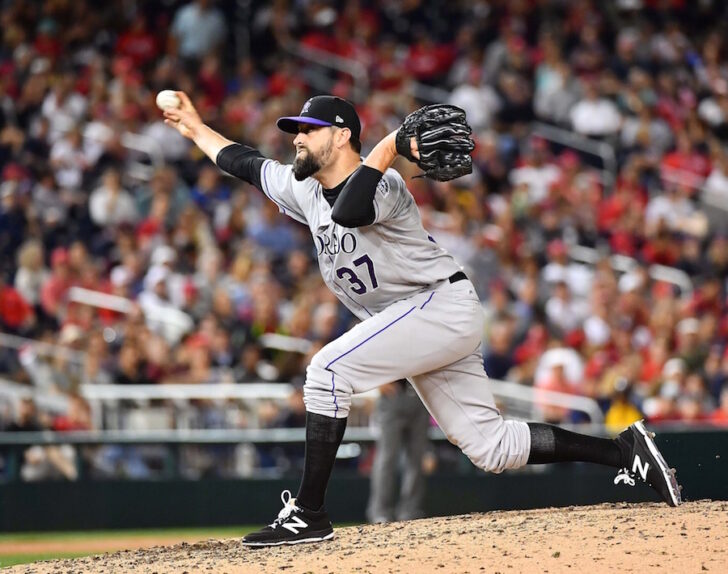The Colorado Rockies are in the midst of what is on pace to be the best season in franchise history. While 2017 has been riddled with ups and downs for the Rockies, so far, the good has outweighed the bad. As a result, Colorado is in a position to snap the franchise’s seven-year postseason drought.
In order to set themselves up for the playoffs, the Rockies made a trade to add to the back end of their bullpen. Colorado acquired Pat Neshek from the Philadelphia Phillies in exchange for three minor league prospects.
The early returns were great on Neshek, who worked a 1-2-3 eighth inning in his first appearance with Colorado, a 4-2 victory over the Nationals on Saturday night.
Neshek, 37, is a one-year rental for the Rockies with his contract set to expire following the completion of the season. Still, trading for Neshek was essential to add help to a bullpen that has been shaky all season outside of MLB saves leader Greg Holland.
With the bullpen addressed, Colorado must now do the same with their starting rotation.
The tricky part of the rotation is that it’s difficult to decide on a common path towards a resolution.
On the one hand, Colorado knows they have a reinforcement for the rotation on the way. Chad Bettis is coming along in his rehab assignment on the return from cancer. Tyler Chatwood is back, but is currently serving in a bullpen role. Tyler Anderson was recently moved to the 60-day DL, so a return this season for the lefty is possible but indeterminate at this time.
So, with as many as three starters lying in the wait what should Colorado do?
Trade for a starter.
Why? Because Bettis, Chatwood and Anderson won’t be enough to take the Rockies to where they want to go.
Bettis could give the Rockies a spark, but the fact of the matter is he’s coming off a battle with cancer and isn’t a power arm anyway. He owns a career ERA over 5.00 and will inevitably face some bumps in the road when he returns. Bettis will give them a boost, but he alone will not suffice.
As for the Tylers, both have proven to be to inconsistent for a team with championship aspirations. Whether it’s Chatwood going through a mental block, or Anderson being unable to stay healthy, both have been deemed weak arms for a postseason push.
With a cumulative ERA of 6.86 and opponent batting average of .330 since the All-Star break, Colorado’s pitching staff has been the worst in baseball.
Neshek is a big-time acquisition for the Rockies, if they can use him effectively.
In four of the club’s last six ballgames, the starting pitcher has failed to last six innings. The result is a taxed bullpen and a hit or miss rotation.
The rotation has witnessed severe spikes in ERA as the season has progressed, which should have the Rockies feeling the pressure as the season grinds on.
The youngsters have been great, but the Rockies are out of their minds if they believe the youngest starting rotation in baseball (Jon Gray, Kyle Freeland, German Marquez, and Antonio Senzatela) will lead them to success on the big screen in the heat of postseason play.
The starters are young, inexperienced, and still considered the future, and the Rockies need to treat them like that. They’ve already exceeded expectations this season, so now it’s time for the organization to bring in an arm to help take off some of the added pressure on their shoulders.
Colorado has rolled the dice with their youth, and they’ve hit on just about every mark this season, but how long could their hot streak last?
With teams like the Washington Nationals and Los Angeles Dodgers fine tuned for the playoff’s, the Rockies need to step up to the plate and add a starting pitcher to help solidify their postseason push and legitimize themselves as a threat in the National League.
The trade deadline is Monday at 4 p.m. EDT, 2 p.m. MDT.



